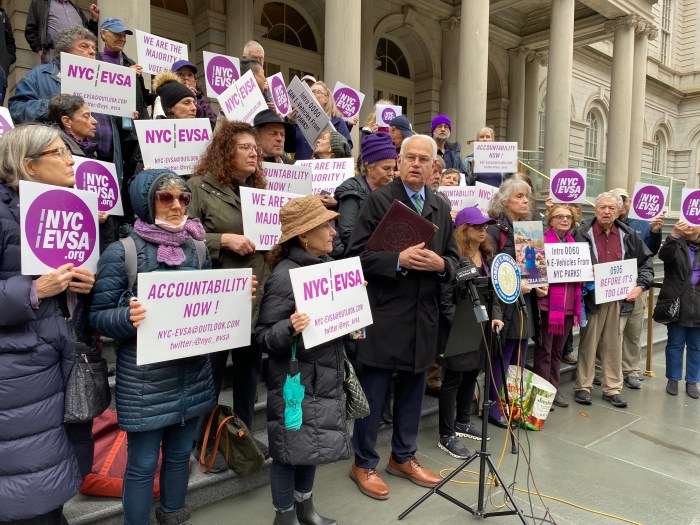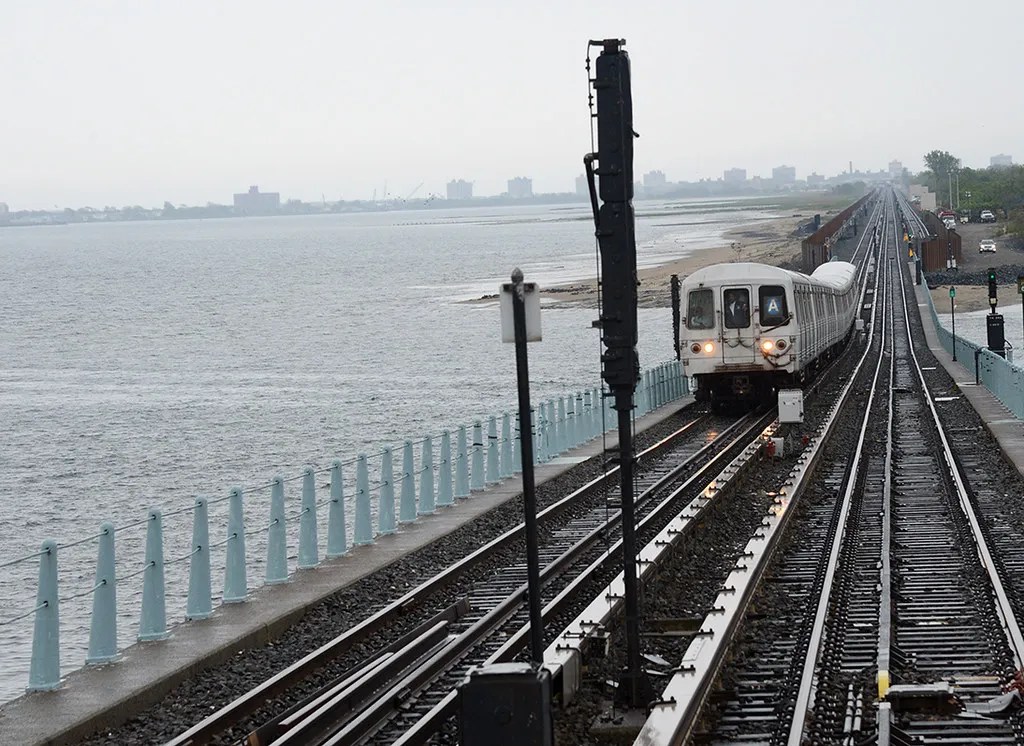
One year into the MTA’s plan to improve bus service, cuts are coming.
The authority is planning service reductions to 11 bus routes as part of larger changes coming to 19 routes running primarily through Manhattan and Brooklyn neighborhoods. Manhattan’s M55 and M7 will see the biggest cuts — waits on the M55 will increase from 15 to 20 minutes at certain times during the day.
The announced cuts concerned advocates, though officials at the MTA described the changes as minor tweaks that free up buses to meet demand elsewhere. NYC Transit President Andy Byford urged patience for the implementation of his bus plan, which aims to “reinvent and re-imagine” service through new borough bus networks; more bus lanes and faster boarding times.
“It’s a bit like building a very large building. The foundations take some time,” Byford said of his bus plan — unveiled last April — at an MTA board meeting Monday. “But that’s what we’ve been doing; we’ve been laying the foundations and then you will rapidly see a beautiful structure emerge.”

But as that foundation is taking shape, the MTA is hemorrhaging ridership. From 2010 to 2016 the authority saw a decline of 60 million annual bus trips — down from 697 million trips to 638 million — as average speeds trended downward and e-hail services like Uber and Lyft barged into the city.
MTA board member Veronica Vanterpool pointed out the potential “death spiral” at play: poor service leading to fewer riders, which leads to service reductions which leads to even fewer riders.
“It just comes back to … this cycle of reducing service, reducing ridership, and then how do we regain that ridership again?" Vanterpool said, questioning whether it was appropriate to make service changes as the MTA also plans to redraw bus routes in each borough over the next five years. “Is this the right time to be reevaluating, as we’re undergoing our bus redesigns and really trying to attract ridership in these boroughs?”
The M55’s 15-minute waits will increase to 20 minutes on weekdays during the morning rush hour; midday and post-evening rush hour. The M7 will see waits increase between one and two minutes during the morning rush; midday and evening rush hours. Similar wait increases also are also coming to the M1, M2, M3, M4 in Manhattan as well as the B3, B74, B24, B11 in Brooklyn. Staten Island’s S51 route is also being targeted for minor service reductions.
The M55 is one of the slowest buses in the city, with an average speed of 4.3 miles per hour, according to the Bus Turnaround Coalition. Riders were livid Monday, including Josue Santos, 45, a construction worker who lives in Hell’s Kitchen. He occasionally takes the M55 to the PATH station at 14th Street where he travels to New Jersey for construction jobs — about a one-hour commute, he said.
“That sucks. That sucks a lot. This doesn’t do anything for anybody. I take the bus everyday. The trains are worse," Santos said. “I can understand that they’re cutting it because there are [fewer] people, but it’s not fair.”
The new schedules will take place this summer — what Judy McClain, MTA Transit’s senior director of service planning, described as part of routine quarterly service changes to align with worker schedule picks.
“We need to go through this process so that drivers can pick their jobs and in the meantime you want to continually review them because there’s operational changes; there’s ridership changes,” McClain said, adding that the reductions will allow the MTA to increase service on another line, the B63.
“We don’t want to wait to make these adjustments until we get the full redesign in place,” she added.
The B63, which runs from Bay Ridge to Brooklyn Bridge Park, will get significant service increases under the changes after the p.m. rush, when waits will be reduced from 20 to 15 minutes. B63 waits during the morning rush hour will be reduced from nine to seven minutes. And a minute will also be shaved off the wait during the evening rush. The B4 will also get shorter waits during Saturday mornings.
Other routes will be getting run-time changes reflecting that their buses are taking longer to get through traffic, though waits will be kept as they are.
Ben Fried, spokesman for the advocacy group TransitCenter, viewed the cuts less as a representation of a death spiral and more of a reflection on the far road ahead to actually improve bus service under the bus plan. After unveiling a Staten Island Express bus redesign last year, the MTA is expected to release a draft for a new Bronx bus network this month.
“I think these service changes are really an indication that the city and the MTA need to get cracking on the bus plan,” Fried said. “The padding changes are a response to slower speeds and traffic congestion. The fact that they feel this padding is necessary goes to show that making more bus lanes and speeding up the boarding process is a really urgent priority.”
With Ivan Pereira






































